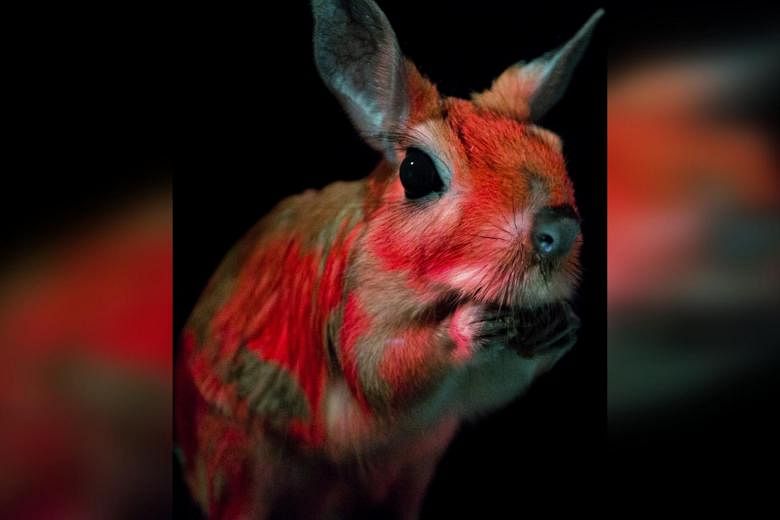(NYTIMES) - Platypuses do it. Opossums do it. Even three species of North American flying squirrel do it. Tasmanian devils, echidnas and wombats may also do it, although the evidence is not quite so robust.
And, breaking news: Two species of rabbit-sized rodents called springhares do it. That is, they glow under black light, that perplexing quirk of certain mammals that baffles biologists and delights animal-lovers all over the world.
Springhares, which hop around the savannas of southern and eastern Africa, were not on anyone's fluorescence bingo card.
Like the other glowing mammals, they are nocturnal.
But, unlike the other creatures, they are Old World placental mammals, an evolutionary group not previously represented.
Fluorescence is a material property rather than a biological one.
Certain pigments can absorb ultraviolet (UV) light and re-emit it as a vibrant, visible colour.
These pigments have been found in amphibians and some birds, and are added to things like white T-shirts and party supplies.
But mammals, it seems, do not tend to have these pigments.
A group of researchers, many of whom are associated with Northland College in Ashland, Wisconsin, has been chasing down exceptions for the past few years - ever since one member, biologist Jonathan Martin, happened to wave a UV flashlight at a flying squirrel in his backyard. It glowed eraser pink.
The researchers then went to the Field Museum in Chicago, Illinois, armed with curiosity and black lights. When the team tried a drawer that housed preserved springhares, they beamed back.
"We were equal parts shocked and excited," said Dr Erik Olson, an associate professor of natural resources at the college and one of the authors of a new paper on the discovery published last Thursday in the journal Scientific Reports.
"We had so many questions."
Over the next several years, the researchers examined 14 springhare specimens from four countries, some male and some female.
All showed fluorescence - many in a patchy pattern, which was unique among mammals they have studied, Dr Olson said.

The researchers also reached out to zoos, to make sure live animals have the trait. A UV photo shoot at Omaha's Henry Doorly Zoo and Aquarium in Nebraska yielded more observations, as well as many glamour shots in which the rodents look as if they have daubed themselves with body paint.
Their glow, a unique pinkish-orange the authors call "funky and vivid", forms surprisingly variable patterns, generally concentrated on the head, legs, rear and tail.
Chemical analysis of springhare hair found that the fluorescence comes largely from a set of pigments called porphyrins, which have also been found to cause this effect in marine invertebrates and birds, said Dr Michaela Carlson and Dr Sharon Anthony, chemists at Northland College who also worked on the paper.
But the biggest question - the one that flashes, like a neon sign, through all of these papers and related observations - is: Why?
The springhare findings in particular provide some avenues for exploration.
There is a possibility that fluorescence helps animals hide from predators with UV-sensitive vision, by absorbing wavelengths that would otherwise be brightly reflected and emitting less visible ones. In that case a patchy pattern like the springhares' might be another asset, Dr Olson said.
In some ways, though, the admission of springhares to this pantheon makes things more confusing.
"Are these species all found on one part of the mammalian phylogenetic tree? Certainly not," said Dr Tim Caro, a professor of evolutionary ecology at the University of Bristol in England, who was not involved with the research. "Do they all have one sort of lifestyle? No."
All eat different things, he said.
"Are they using this delightful coloration to attract mates so we might see a characteristic signature of one sex but not the other fluorescing? No, that does not happen either."
That "there is no pattern", Dr Caro said, suggests that "either we don't know the function of this sort of coloration, or there is no function at all".
According to Dr Olson, there is only one thing to do: keep shining those black lights.
He said: "The hard work of documenting this trait more broadly, across Mammalia, is now at hand."
Watch this space.

